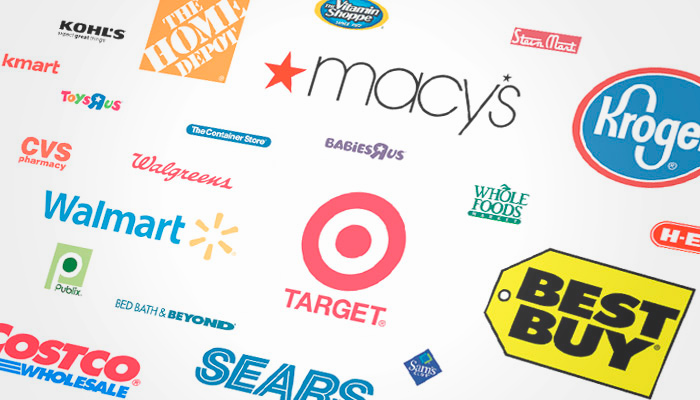
OMNI-CHANNEL REGENERATION
VIPER THOUGHT LEADERSHIP #4
“OMNI-CHANNEL REGENERATION”
By Sarah Palisi Chapin, Matthew Gutermuth, D.G. Hague and Monica Woo
Eight minute read
Many venerable retail banners are collapsing under the economic turmoil triggered by the pandemic. The retailers that have successfully managed COVID-19 shutdown and reopening are fortified by agile leadership, a reliable balance sheet and digital commerce capability. Nearly 80% of U.S. consumers shopped online for groceries since the COVID-19 outbreak[1]. Online grocery sales is projected to increase by at least 40% in 2020[2]. Digital commerce bolstered two retail giants’ Q1 2020 results: Target’s comp sales growth was largely driven by a 141% increase in comp digital sales, while Walmart US eCommerce sales growth of 74% lifted overall comp sales.
In a recent round table on how retailers can accelerate digital commerce capabilities amidst the economic volatility, VIPER EA’s CEO, D.G. Hague, discussed with three board advisors who have extensive operating expertise in omni-channel retail: Sarah Palisi Chapin, Matthew Gutermuth and Monica Woo.
D.G. HAGUE: What are the top challenges to fast track digital commerce for omni-channels retailers? Would you each identify one?
SARAH PALISI CHAPIN: Optimize inventory by digital channels and store locations, and use that data when activating sales across channels. So many retailers in different verticals — Home Goods, Apparel & Fashion, Grocery — do not have visibility of what, how much and where their inventory is by SKUs. The lack of control over inventory results in sales loss from out-of-stocks, high carrying cost in overstocking slow-turning items, and increase in the risk of shrink.
MATTHEW GUTERMUTH: Protect the retailer’s brand equity and quality of shopper experience. To fast-track eCommerce, many retailers rely on third-party fulfillment services, such as, Instacart and Shipt. While pragmatic in the immediate term, it is sub-optimal in the long run, as the third-party providers are apathetic to protecting the retailers’ brand equity. For perspective, Instacart is retail banner agnostic, and relies on “gig workers”, who are not incented to deliver a retailer’s specific brand experience. Shipt has created direct relationships with consumers on their platform. The retailers leveraging Shipt have essentially offered to share their customers with Shipt’s owner, Target.
MONICA WOO: Forecast demand by store locations, across physical and eCommerce channels, customer segments, seasonality, SKUs and marketing campaigns, and linking demand projections to inventory management. This task is challenging during “normal times”, and even more daunting amidst an unpredictable economy. Since historical assumptions are no longer relevant, retailers need to dynamically forecast demand and allocate resources, based on multiple future scenarios.
DH: Wow! All really big challenges. What are the solutions?
MG: JOB #1 is to identify incremental profit, which can be reinvested to fund the initiatives required to create a seamless customer experience online and in-store. Explore VIPER EA, a retail analytics platform is built specifically to find wasted dollars, and uncover hidden savings associated with systemic and operational deficiencies that deplete profit.
DH: Not only does VIPER EA pinpoint profit opportunities, we also recommend practical actions at hyperlocal level – with full drill down by personnel and product of each store. We help field and corporate management make sound decisions on which stores to reopen or close, and how store fleet can be optimized amidst field personnel cutback.
SC: For omni-channel retailers, inventory optimization requires integrating massive volume of data across physical and digital stores, and functions. It is best to leverage the Artificial Intelligence (“AI”) expertise of an external resource like VIPER, without having to change out an ERP system or make a capital investment.
MW: To build on Sarah’s point, agile scenario-based demand forecasting requires the computational power of Machine Learning models – VIPER’s proven capability. Furthermore, as part of re-opening, retailers need to offload old inventory to refresh merchandises. With predictive analytics, VIPER can help retailers increase total basket size, and offset the profit lost to promotional discounting.
DH: Given your omni-channel expertise, can you each share a tactic that benefits across digital and physical channels.
SC: Inspire shoppers with entertaining and educational experiences. Despite the shut-down, I have not stopped shopping at my favorite department store chain, because my personal shopper engages me with fashion shows and skin care sessions on Zoom. In fact, my friends enjoy the virtual sessions so much that they have become new customers. Another success story is how Clif (Clif Bars!) Family Winery has expanded sales and new customers, despite the pandemic. They not only engage consumers with Zoom-based culinary and wine tasting experiences, but also, drive sales with pre-shipped event offerings as well as club memberships.
MG: Use smart pricing to achieve profitable digital commerce. Dismiss the myth thatonline pricing must be identical to in-store pricing. Leverage Amazon’s age-old tactic of setting their pricing to offset the incremental expenses associated with online orders, such as shipping and fulfillment, eCommerce can be, and is, profitable for retailers!
MW: Command a unified control of KPI drivers across channels and functions. To inform sound decisions, omni-channel retailers need to integrate and analyze data across digital and physical selling channels, store locations, POS, as well as systems managing merchandising management, finance, inventory supply chain, fulfillment and Human Resources.
DH: Love the valuable tips. Thank you! To help retailers succeed during challenging times, VIPER EA is offering a $1 million Profit Improvement Guarantee™. We will deliver a minimum of $1 million in profit increase or pay the difference. VIPER shows you the money AND guarantees the payout!
Sarah Palisi Chapin is a board director at Middeby Corporation and was formerly the CEO and board member at Hail Merry Snack Foods. She was a board director at several companies, including: Yummy Spoonfuls Organic Baby Food, Caribou Coffee, Prime Source FSE, and also, was CEO and Board Chairwoman at Enersyst Development Center. Sarah is an advisor to the Board of VIPER EA LLC.
Matthew Gutermuth is board director and Chief Operating Officer of iControl Data Solutions, as well as Chairman of the Board at GroceryKey. Previously, he was President/CEO of Safeway.com and was a member of Winn-Dixie’s executive team who achieved their turnaround (2008-2012). Matt is an advisor to the Board of VIPER EA LLC.
D.G. Hague is the CEO of VIPER EA, has served as an operating partner/advisor of several private equity firms, and board member to a number of for-profit and non-profit organizations. Des was formerly CEO & President of CenterPlate, President of IHOP and of Safeway Corporate Perishables.
Monica Woo is the CEO of WooWorks, which invests in and advises digital commerce, AI and omni-channel retail. Previously, she was President of 1-800-Flowers.com and Bacardi Global Brands, and FreshDirect’s Chief Revenue Officer. Monica is an advisor to the Board of VIPER EA LLC.
[1] Supermarket News, Russell Redman, May 27,2020; Inmar Intelligence Survey, May 27, 2020.
[2] Coresight Research U.S. Online Grocery Survey 2020.



